Miscarriage Support: Coping Tips and Emotional Care
A miscarriage is defined as the loss of a pregnancy before the 24th week. Miscarriage is an incredibly difficult experience, both emotionally and physically. It’s important to take care of yourself both in body and mind and to prioritize self-care after a miscarriage. This includes taking time for yourself, engaging in activities that make you feel calm and relaxed, and finding ways to express your emotions. Additionally, it’s important to seek out professional help if needed, such as counseling or support groups. Here, we’ll discuss the different ways to take care of yourself after a miscarriage, including physical, mental, and emotional self-care. Please keep reading for details on the following topics:
Signs and symptoms of miscarriage
Causes of miscarriages
Diagnosis of miscarriages
Treatment of miscarriages
Selfcare after a miscarriage
Risk factors for miscarriages
Threatened miscarriage
Incomplete miscarriage
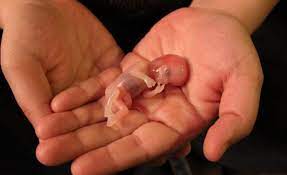
CAUSES OF MISCARRIAGES
Miscarriage is a difficult experience for any woman and family to go through. It is caused when the fertilized egg is abnormally developed. It can also be caused by a variety of factors, including genetic abnormalities, health conditions, environmental factors, and lifestyle choices. We will now explore the various causes, how they can be prevented, and how to cope with the aftermath.
SIGNS AND SYMPTOMS OF MISCARRIAGE
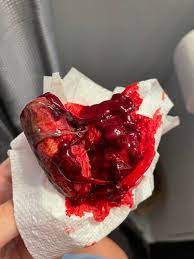
Miscarriage is also known as spontaneous abortion and is the loss of a pregnancy before the 20th week. It is important to speak to a doctor if you experience any of these symptoms to determine if a miscarriage has occurred. The signs and symptoms can vary and may include:
A decrease in the pregnancy hormone (hCG)
A decrease in the symptoms of pregnancy
Abdominal or pelvic pain or cramping
Passage of clots or tissue from the vagina
HOW A MISCARRIAGE IS DIAGNOSED
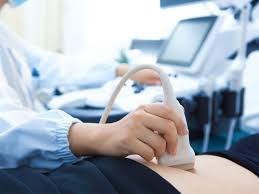
It is important to understand all the potential signs and symptoms, as well as the tests that may be used to confirm a diagnosis.
A speculum examination to determine the signs
A blood test to determine whether the woman is pregnant
A pelvic ultrasound to confirm a pregnancy
TREATMENT OF MISCARRIAGE
Dealing with the physical and emotional aftermath can be overwhelming. For those who have experienced a miscarriage, it can be helpful to understand the process of Dilation & Curettage (D&C). D&C is a surgical procedure used to remove tissue from the uterus. It is typically performed within a few hours of diagnosis and involves dilating the cervix and suctioning out the contents of the uterus. The procedure is generally safe and effective, though it is important to speak with a doctor or medical professional to determine if it is the right choice for you.
Highlights
A miscarriage cannot be stopped if already in progress
A dilation and curettage (D&C) is used to remove debris from the uterus which can cause further bleeding and infection
D&C
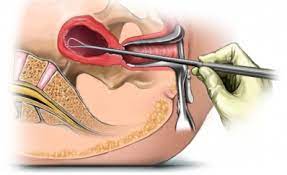
Dealing with the physical and emotional aftermath of a miscarriage can be overwhelming. For those who have experienced one, it can be helpful to understand the process of Dilation & Curettage (D&C). D&C is a surgical procedure used to remove tissue from the uterus. It is typically performed within a few hours of diagnosis and involves dilating the cervix and suctioning out the contents of the uterus. The procedure is generally safe and effective, though it is important to speak with a doctor or medical professional to determine if it is the right choice for you.
SELF CARE

It’s important to take care of yourself both in body and mind and to prioritize self-care after a miscarriage. This includes taking time for yourself, engaging in activities that make you feel calm and relaxed, and finding ways to express your emotions. Additionally, it’s important to seek out professional help if needed, such as counseling or support groups. Here, we’ll discuss more ways to take care of yourself:
Use pads instead of tampons to avoid
Take medication to help relieve the cramps
Be sure to eat foods rich in iron to help rebuild the iron levels in the blood
Be sure to talk to someone to manage one’s feelings and cope with the loss incurred
Seek medical advice regarding future pregnancies
RISK FACTORS FOR A MISCARRIAGE
Being over 35 years
Had miscarriages before
Cysts on the ovaries
Having an infection in the pregnancy
A disorder of the blood clotting function
Abnormality with the uterus
Was exposed to certain medications or chemicals
Use of drugs, alcohol or cigarettes
Use of caffeine
THREATENED MISCARRIAGE
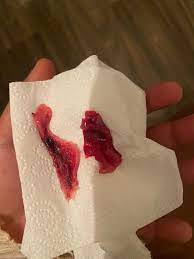
Threatened miscarriage, or a threatened spontaneous abortion, is the term for when a woman experiences symptoms that could indicate a potential pregnancy loss. Though it can be a very worrying time, the majority of pregnancies will continue without any issues.
Highlights of threatened miscarriage
The woman displays signs of a miscarriage, but the baby is still alive
Refraining from sexual intercourse
Progesterone
Avoiding NSAIDs
INCOMPLETE MISCARRIAGE
Incomplete miscarriage happens when the embryo or fetus dies in the womb but is not completely expelled from the body. Some of the pregnancy tissue remains in the uterus, but the cervix is usually open. Symptoms include vaginal bleeding, cramping, and the passing of fetal tissue. Treatment may require a procedure to remove the remaining tissue or medication to help the body expel it.
Highlights of incomplete miscarriage
There are still parts of the fetus or the placenta remaining in the uterus
The miscarriage is allowed to continue naturally, and the woman is monitored for complications
Medication can be administered to help the woman pass out the rest of the products
Dilation and curettage (D&C) or vacuum aspiration to surgically remove the rest of the products
Disclaimer: The information provided in this content is for general informational purposes only. It is not intended as medical or healthcare advice, diagnosis, or treatment. Always seek the advice of a qualified healthcare professional with any questions you may have regarding a medical condition or healthcare decisions.

